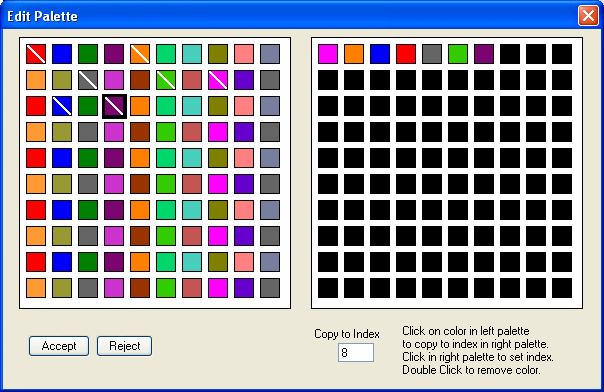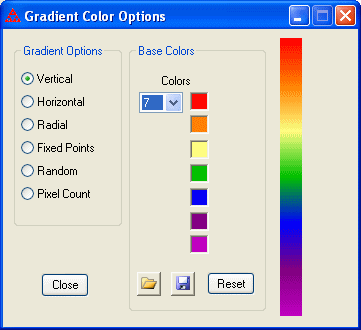

The pixel count gradient option will plot the color of a point in the fractal depending on the number of times the pixel corresponding to that point has been hit during the iteration steps. Because many close points may correspond to the same pixel, this coloring method is just an approximation. When this option is chosen, the dialog box will display text boxes in which the user can enter the pixel count for the base colors. For example, in the example below, we color red, shading to orange, if the pixel has been hit between 1 and 5 times; orange shading through yellow if the pixel has been hit between 5 and 10 times, and so on ending up with purple if the pixel has been hit at least 30 times.
